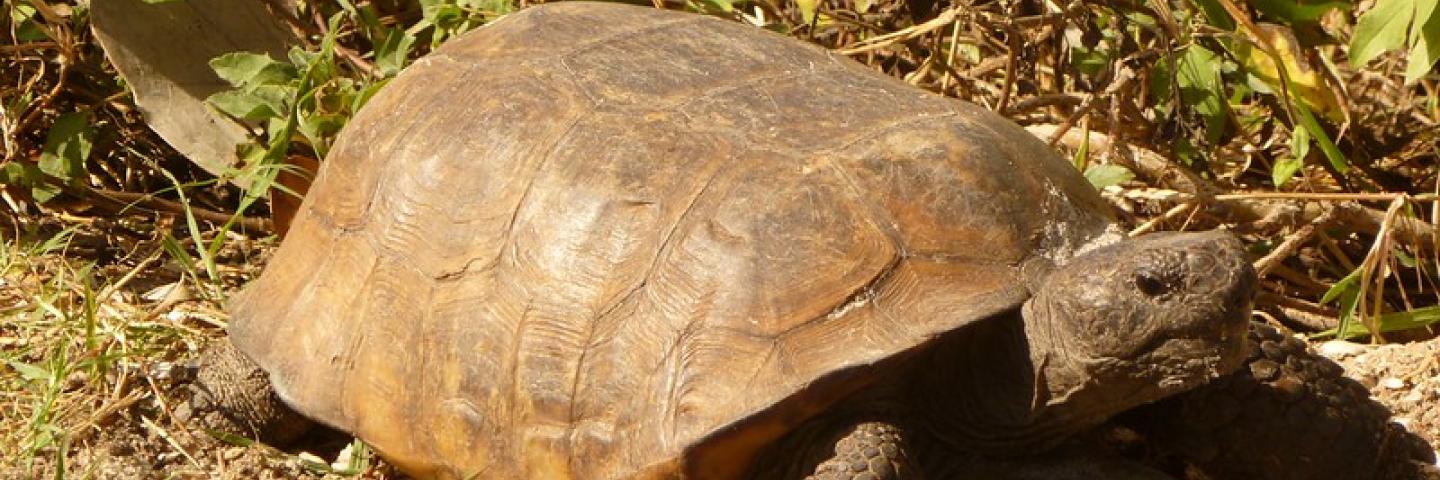Threatened Gopher Tortoise Bounces Back with Targeted Conservation

The successful rebound of longleaf pine forests and the gopher tortoise that calls them home is largely due to forest landowners and land managers.
By implementing voluntary forest management conservation practices like prescribed burning, forest stand improvement, and brush management, these landowners and managers helped make possible a recent decision that gopher tortoises don’t need federal protection in most of its range.
On October 11, the U.S. Fish and Wildlife Service announced that listing the gopher tortoise as a threatened or endangered species under the Endangered Species Act (ESA) is not warranted for most of its range. Significantly, the eastern range of the species, which includes Florida, Georgia, South Carolina, and most of Alabama, does not require additional protections under the ESA and will be withdrawn as a candidate for listing. The western range of the species, which includes western Alabama, Mississippi, and Louisiana, will continue to retain its threatened status. This announcement instantly reduces regulatory oversight for millions of landowners across four southeastern states.
The gopher tortoise, considered a keystone species, is critically important to the survival of more than 350 other wildlife species that benefit from gopher tortoise burrows. Their longleaf pine habitat has also been at risk.
Eighty percent of gopher tortoise range is on private lands, making conservation efforts by individual landowners essential to gopher tortoise survival. In fact, nearly two thirds of all wildlife species listed as threatened or endangered live on private lands. Partnering with landowners is critical to protecting wildlife, while also keeping working lands working for the millions of people in the United States and around the world that depend on U.S. agriculture.
NRCS Conservation Efforts
NRCS has been targeting conservation work in the Southeast to restore gopher tortoise habitat, and its Working Lands For Wildlife (WLFW) partnership unites conservation partners and agricultural producers to help manage land for wildlife and agriculture.
Since 2012, NRCS has invested nearly $73 million in WLFW projects across the 6-state range through 4,600 private landowner contracts. From 2012 to 2021, conservation practices supporting gopher tortoise habitat were implemented on over 1.6 million acres through WLFW and the Longleaf Pine Initiative (LLPI). The Farm Bill’s Regional Conservation Partnership Program used conservation easements to protect an additional 42,000 acres of gopher tortoise habitat.
Through the WLFW partnership, NRCS provides assistance as well as regulatory predictability under the ESA to landowners who implement NRCS-prescribed conservation practices. Additionally, the LLPI complements gopher tortoise habitat restoration.
Learn more about NRCS’ wildlife conservation efforts. To get started with NRCS, visit your local USDA Service Center.

